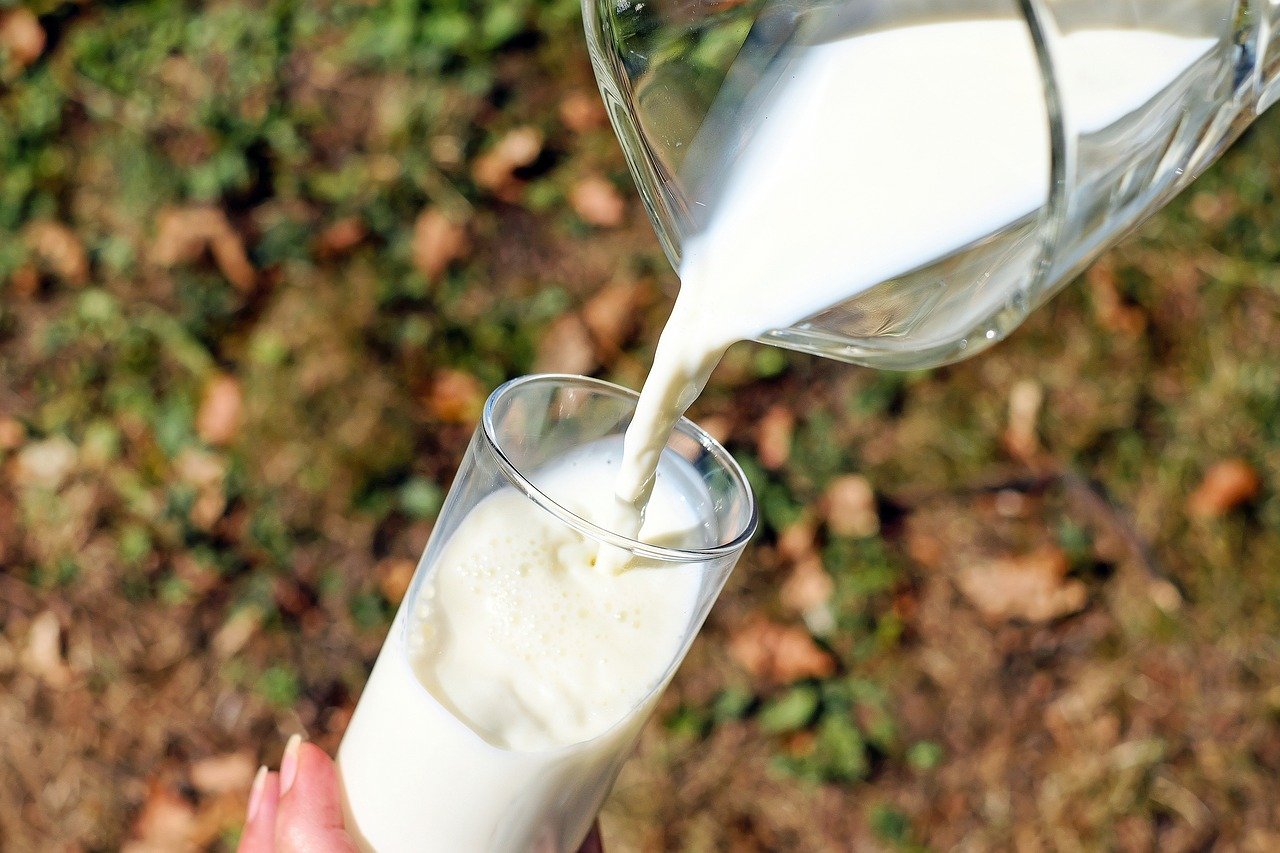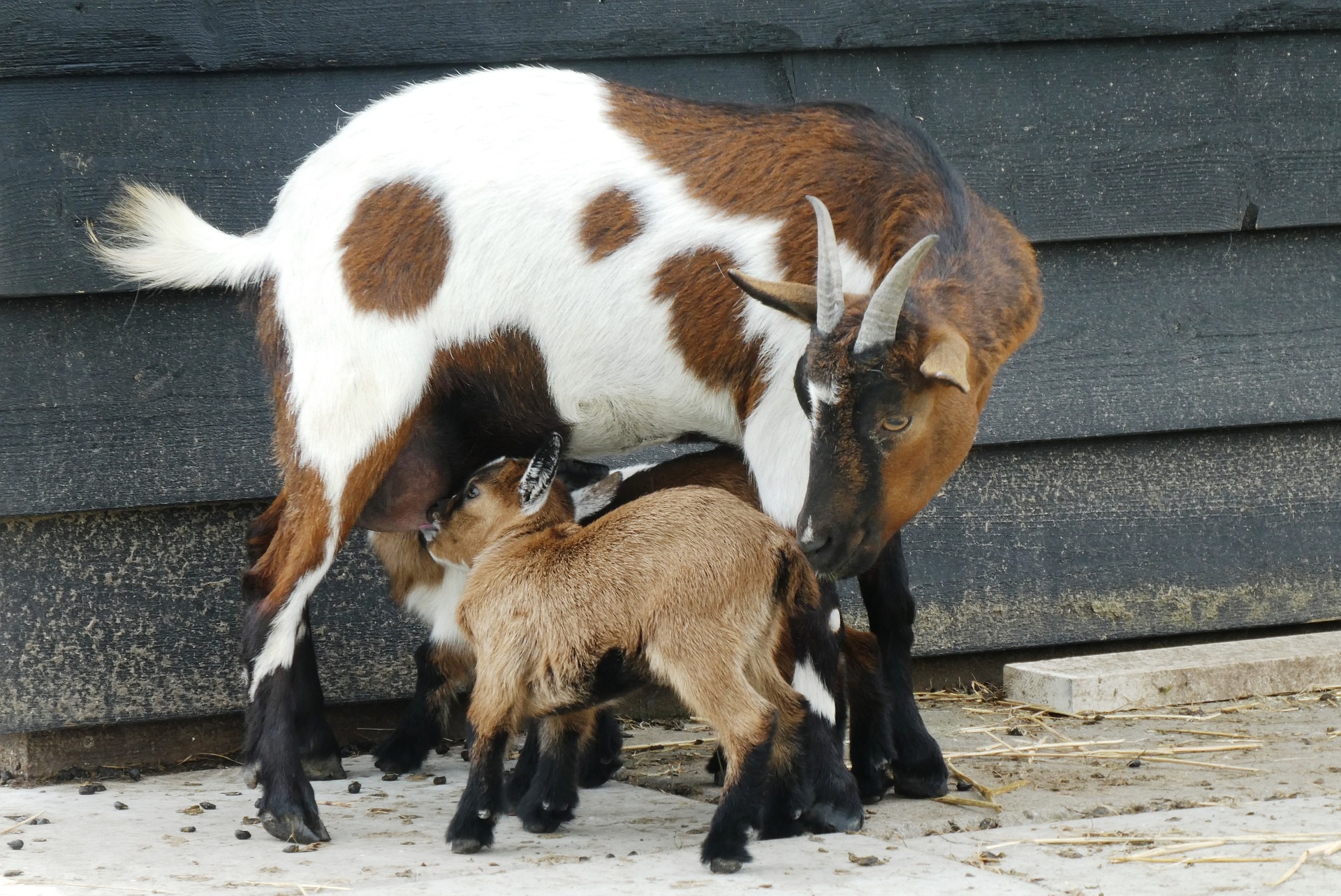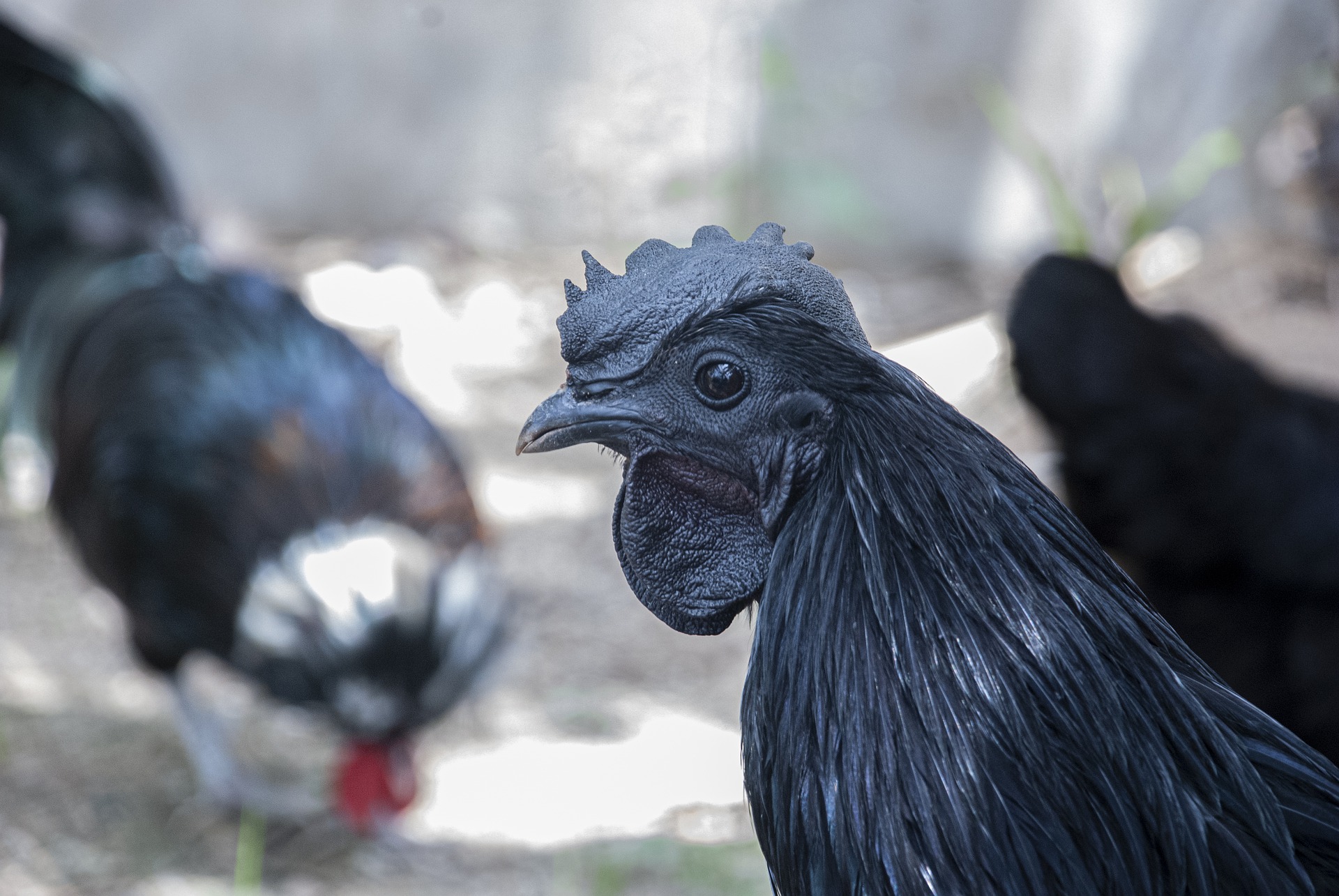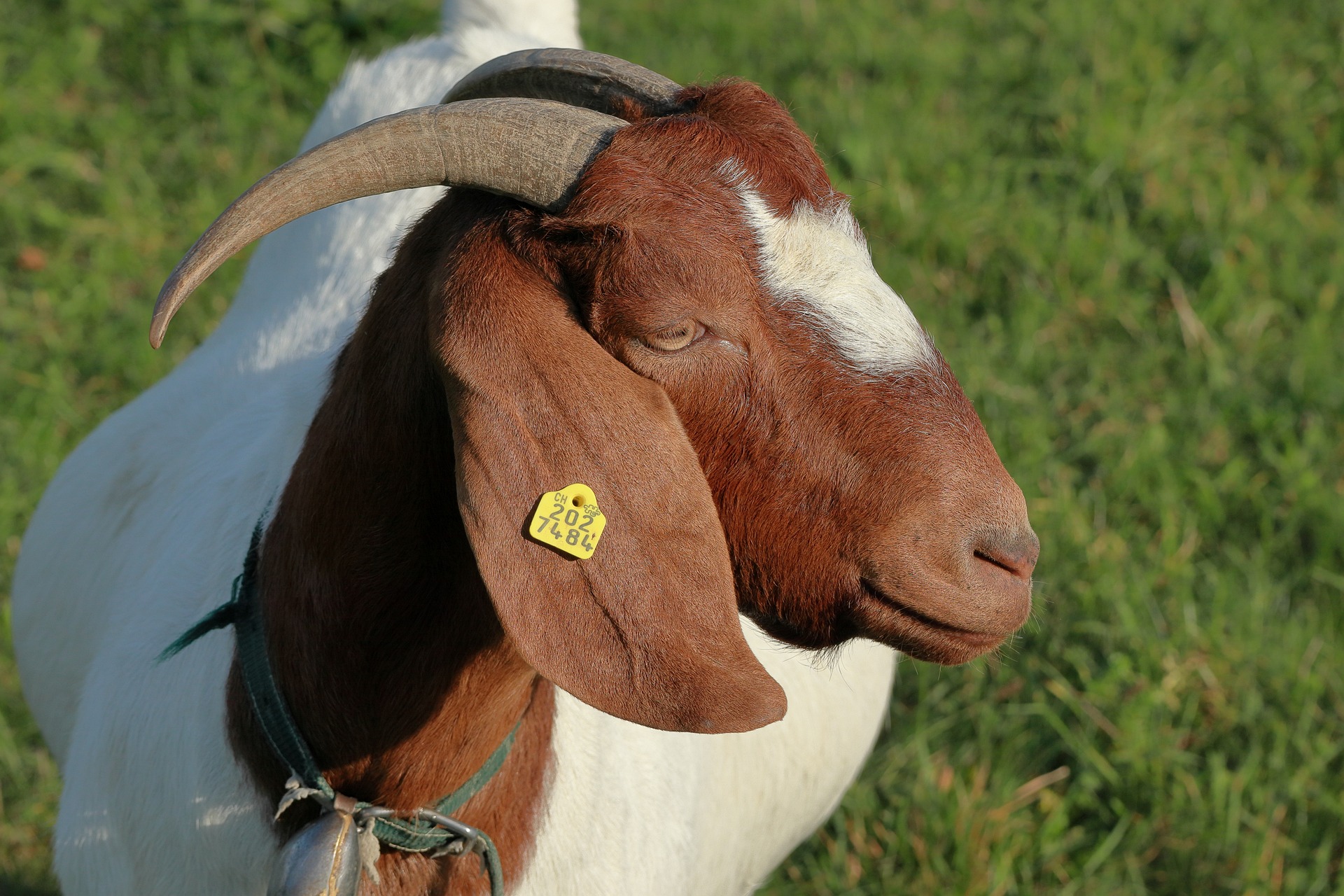Your cart is currently empty!
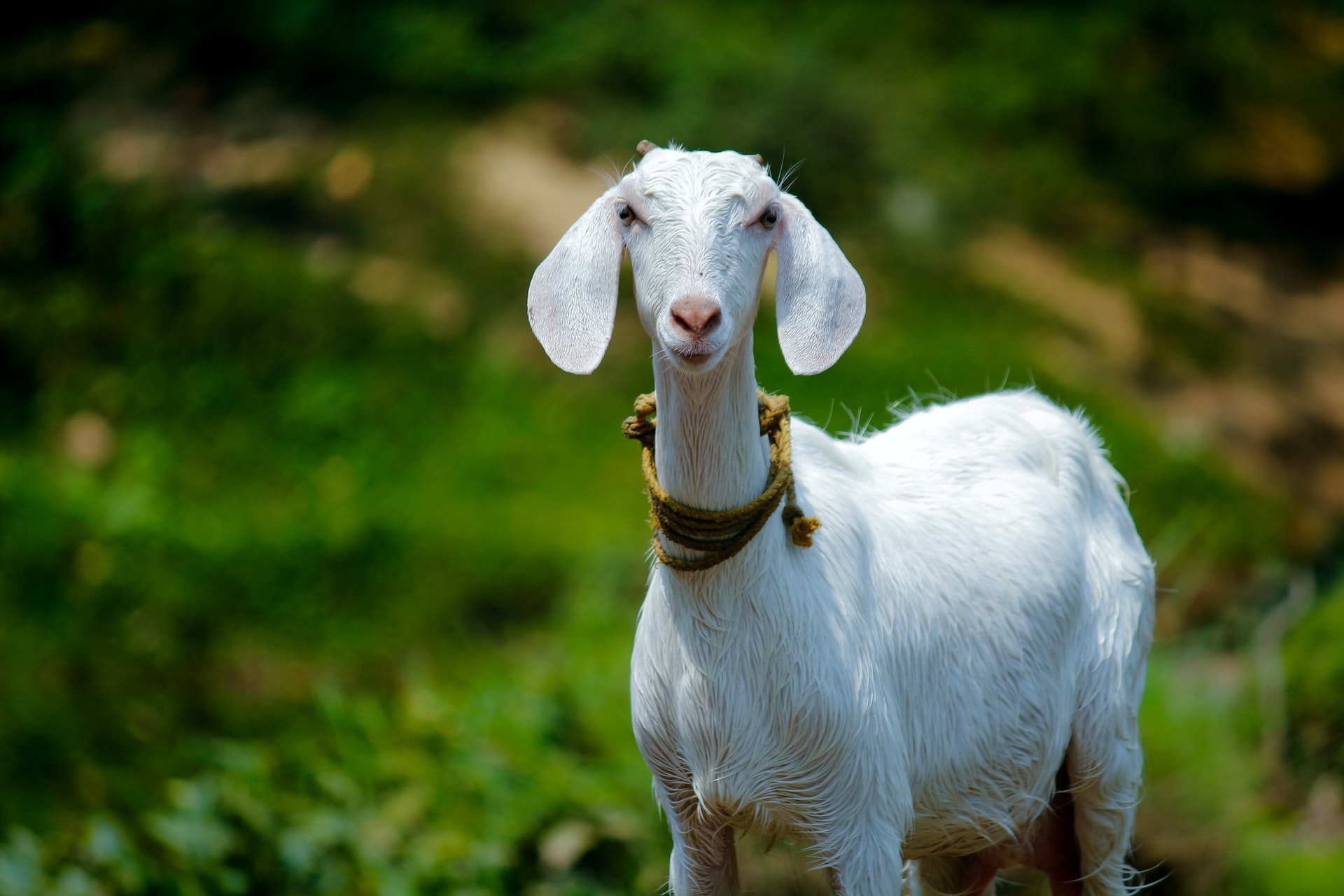
Tellicherry / Malabari Goat Farm
Goats are one of the key meats produced worldwide and in India too. Mutton or goat meat has always been considered healthier than poultry and expensive too. Though many people do not have a palate for goat meat, there are others who prefer goat to poultry. Nevertheless, Goat is always considered one of the best meat sources and the production of goat for meat has always been the primary source of income for many farmers in india.
Tellicherry goat or the malabari goat is well known for its features. It’s one of the feasible goat breeds which have fast growth, high milk yield and good kidding. Malabari goats are known to mate in the 7th month, deliver kids in 5-6 months and produce 2-3 kids every season. A good malabari goat will deliver 4-6 kids a year. Malabari goats are known to go from kids to 20 Kg adult in 7 months with proper care.
Goats are selected based on weather conditions and areas. Malabari goats do well in almost all regions with moderate heath and as long as its not too cold or too hot. For most of India, Malabari goat is perfect except for places like Himachal and kashmir. Parts of Rajasthan and Gujarat are also suitable for Malabari goats but the best areas are in the southern part of India which is maharashtra, kerala, goa, andhra pradesh tamil nadu and karnataka. Most states in the north are not aware of the breed and it has not gained so much of popularity yet.
Malabari goats features
Original Malabari Goats are white. There are black goats which are very rare. Purebred malabari goats are usually white. Malabari goats are from the mountain areas of kerala. They are fast growing , fast breeding variety of goats. While Tellicherry goats (Also referred to as malabari goats) can be bred in open grazed, shed fed tellicherry goats are much easier to handle and breed. They are known to gain weight faster and be free from diseases too as compared to open grazed goats. That’s not to say that goats are always contained in sheds. Goats are allowed to graze for a limited amount of time every day. This allows them to play around and get some much needed exercise which is very important to their health. But limiting movement will effectively increase their overall weight and limit their exposure to pests and diseases.
Malabari goats are known to reach full size in almost 7 months. From less than 2 kg to a full adult 20 KG goat in 7 months is possible in very few varieties of goats and Malabari goats are one of them. They are ready to mate in the 8th month and will deliver babies in one year from birth. This is one of the reasons why malabari goats are much preferred for growing.
The Malabari goats are also known to provide around 2.5 litres of milk. While the milk may not be available for human use at least for the first few weeks, it will be more than sufficient for the kids and for their healthy growth. It is still possible to milk around half a litre of milk from a goat after feeding the kids. Most other breeds will not provide the quantity of milk required for the kids to sustain themselves leading to high mortality rate or poor health in kids. With the Malabari goats, this problem is rare.
A healthy malabari goat will deliver 2-3 kids every 6 months. This will reduce over a period of time with age and when the goats don’t deliver kids in time or the kids are low in number, the mother stock is often sold for meat.
With Good management and proper feeding, a malabari goat will reach 20-22 kg in 7 months. With moderate management people can see 16-18 Kg goats in the same period of time.
Feed for goats
The only major expense for a goat farm is the feed. Feed is a constant requirement when it comes to a goat farm and farmers need to be prepared for the same before starting their farm. Most farmers overlook this factor and end up purchasing feed from the local area or cutting leaves and shrubs from nearby farms and fields. This increases stress levels in farmers and also expense in transportation. If feed is purchased, the cost of the feed increases and the overhead is high.
Farmers should first cultivate the required feed in their own farm. A list of feeds which you can grow is available at the below link
Farmers should start cultivating these crops at least 3-4 months prior to buying their livestock. This ensures that the goats have all the necessary food right in the farm and always ready. Some of these crops are essential for good health of goats and not just a dietary requirement but a medicinal one too. For instance agathi is beneficial for overall health of the goats and should be fed to them at least once a week.
Feeds for goats come in 3 forms. Green feed, Dry feed and concentrate feed. While most farmers do arrange for green feeds and dry feeds, concentrate feeds are often overlooked. Its important that goats do consume concentrate feeds regularly and 200 Grams of concentrate feed should be included in their diet. Concentrate feeds are easy to make right in the farm and almost all produces are available in the local market.
A healthy concentrate feed for goat will consist of
- Sorghum
- Maize
- Broken rice
- wheat
- Groundnut cake
An addition of coconut cakes (after removing oil) is also considered good.
Concentrate feed helps goats gain more weight and also increase milk production in Mother goats. Lactating goats and pregnant goats should be fed at least 300-350 Grams of concentrate feed daily. This is very crucial for the health of the mother and baby.
Once the goat delivers , the goat will be in heat in 22-25 days. You will see signs of heat when they wag their tails or bleat a lot. When the goats are in heat its important to allow them to mate. Goats will be ready for their next delivery in 5-7 months and the cycle continuous.
Things to consider for a profitable Malabari goat Farm
There are a few factors which impede success in malabari goat farming. Some are business decisions and others are related to health and care of the goats themselves.
Land on Lease for Goat farming
Many farmers or “wannabe” farmers start a goat farm on a leased land. What they overlook is the cost of the entire project. A medium sized farm of 2-3 acres of land will cost anywhere from 60,000 to 1 Lakh per year. The provisions of water and the shed will also need to be considered. If there is no shed available , the cost of constructing one will go anywhere from 2 lakh to 20 Lakhs depending on the shed you want to construct. If you lease a land for 1 year, you will not get a return in 1 year with goat farming. Your first income will only start from the frist year and usually only after 18 months. The revenue generated will not cover your expense at all. To cover your expenses, it will take a few years, not months or weeks. Your land, if on lease will usually add up to the cost and be a burden to you. If you want to start a goat farm, start in your own land. Period
Water
Most people think that goat farming or chicken farming or any livestock farming does not need water. It’s not like plants, that they have to be watered every day. Unfortunately , this is not true. Water is one of the most crucial requirements for any livestock farm. May it be a goat, chicken , cow, pig or any animal. No animal survives without good water. As a matter of fact, the water should be pure and potable. It should be consumable by humans. Unclean water will only increase chances of disease in your animals and subsequently death followed by losses in business. Water should be provisioned for before starting your goat farm without fail.
Feed.
As explained before, Cultivate all your green fodder and dry fodder. You may have to buy the concentrate feed mix from the local store but the green and dry fodder should be from your own farm and cultivated by you to reduce overall cost of farming goats
Breeds and varieties
Some farmers tend to mix goats. A malabari goat with a boer or another variety. This may be due to carelessness or intentional, but at the end of the day, if you intend to sell goats for breeding purposes, Buyers expect a pure breed. A Mixed variety will sell for meat purposes but not do well for breeding. Breeders will simply not buy a cross breed goat or will pay you marginally less than what they pay for a purebred malabari goat.
Vaccination and veterinary care
You may be an expert in Goat care and breeding them but you are going to be short handed and unable to fix problems when goats are unhealthy. Every living being becomes sick at some point of time or the other. Good health is what we all need and so does your goat but what happens when they are sick. A veterinary doctor will save you from losses before things take a turn for the worse. Knowing what vaccines are needed, when they are needed, what is wrong with your goats and what health issues they are facing etc are best left to experts. Most government veterinary hospital doctors are available for help but you will need to keep them on your phone list. Get them to visit the farm and vaccinate the newly born kids. Know when to deworm the goats and do them regularly and in time.
Tracking and Management
When a farm is successful its important to refine the success. If you have a farm of 200 goats or more, its important to know which of the goats are not delivering kids and which of them are old. When its time to sell a goat you should know which ones to sell and which ones to sell fast. Tracking also ensures that you know which goats have had the vaccinations on which dates, which kid was delivered on which date , who is the mother and father of the kid and every detail pertaining to the goat. This also ensures that your goats are insured correctly in time. Tracking is key to success when it comes to large scale goat farming. OVerlooking this factor alone will leave you as a mediocre farmer who sells malabari goats and always remaining in the 200-300 goat owners category.
Insurance
Insurance is key to limit your losses in goat farming. Insurance falls in loss of livestock and your losses will be limited. Always insure your livestock.
Caring for Kids
Malabari Goats will be in heat from the 7th or 8th month after they are born. Once they mate, their diet needs to change. From the 4th month onwards the pregnant goat will need dietary changes. Increase concentrate feed to 300-350 grams per day. This is crucial for the health of the mother and the baby goat to be born.
Once the goat delivers, extra care needs to be taken. Some mother goats don’t feed their kids and some kids don’t feed in time or feed at all. This results in high mortality and weak health in kids. Its important to ensure that the kids feed the mothers colostrum milk the first week and owners may have to help the kids while feeding. Feeding needs to happen at least 6 times a day and you need to keep watch of the same. Helping the kids feed is mandatory for a healthy goat. With kids feeding regularly on the mothers milk will ensure that your goat kids will attain a good weight in 4-5 months without any other extra effort.
Goats will have to be vaccinated and dewormed regularly. The mother goat is dewormed immediately after delivery. Its important to change the deworming medicines each time so that the goats body does not get accustomed to the deworming medicine resulting in no effect.
Apart from the normal diet its important to take care of the goats’ premises. Adding a bit of turmeric and lemon juice in the water will ensure that the goat has better immunity levels. Feeding agathi weekly is recommended.
Dhoop or agarbatti is often lit to reduce pests in the evening. Mosquitoes and other insects can be avoided with these routines.
Revenue from Malabari Goat
Many farmers are focused on the meat production from malabari goats. Tellicherry goat, being a fast reproducer ensures bulk revenue for goat farmers after a 2-3 years. Unfortunately, this business model is not sustainable. While bulk revenue seems enticing, it comes with its own range of caveats. Many farmers find that bulk selling often results to poor price and also irregular sale.
For regular sale its important to have a business model in place. Farmers who integrate other animals in their farm have found better success with goat farming. Farming chicken, Rabbits and fowls have been seen to be more sustainable along with goats. Goats often is a good revenue model but the revenue starts after 18 months. Other animals start generating revenue in as little as 50 days or less. Chicken comes with a byproduct of eggs which is a separate source of revenue too.
Apart from Selling the goats wholesale and in bulk, you should consider selling meat in retail which is often more profitable. Milk from goat is an extra source of revenue which is a great niche for people who want to buy them. Find a source for Goat milk sales and you may be amazed at how many people will be interested in it. Children can benefit immensely from goat milk and marketing goats milk is far easier than marketing cow milk. The prices too are more than double for organic goat milk and goat milk products.
Malabari goats are sold depending on their weight sex and age. Kids go for up to 320 rs per kilo female goats are 275 rs per kilo and adult males cost 300 rs per kilo. When sold as meat the price goes to 500 Rs per kilo. With a normal female goat weighing an average of 22-24 kg, you can expect a price of 6050- 6600 and a male to be around 7500- 8100
The Tellicherry goat yields 2.5 litres of milk per day but most of the milk will be needed for the kids. Even then you could milk around half a litre per day. The average cost of 1 litre goat milk is around rs 100. This could be an additional income from goats too. And also to note is the fact that the malabari goat milk has a far higher fat content which is Good fat for kids.
Things to do and keep note of
If there is a sick goat , always isolate them immediately. Get veterinary care immediately. Allowing the goats to be in the same pen as the sick one will only transmit the disease to other goats if it’s infectious.
FAQs (Frequently Asked Questions) – Malabari Goat
Q: What is a Malabari goat, and where is it primarily found?
A: The Malabari goat is a breed of domestic goat that originated in the Malabar region of Kerala, India. It is primarily found in the coastal and hilly areas of Kerala and neighboring states.
Q: What are the distinguishing features of Malabari goats?
A: Malabari goats are known for their distinctive appearance, with a well-developed body, short and erect ears, and a convex face profile. They have a compact and sturdy build, making them well-adapted to the local climatic conditions.
Q: What is the color of the Malabari goat’s coat, and do they have any specific coat patterns?
A: The Malabari goat’s coat color varies, and it can be predominantly black, brown, or white. Some Malabari goats also exhibit unique coat patterns, such as spots or patches of different colors.
Q: What is the typical size and weight range of adult Malabari goats?
A: Adult Malabari goats are of medium to large size. Bucks (males) generally weigh between 40 to 50 kilograms, while does (females) weigh around 30 to 35 kilograms.
Q: What type of habitat and climate are suitable for rearing Malabari goats?
A: Malabari goats thrive in hot and humid climates, making them well-suited for the coastal regions of Kerala and nearby areas. They are adaptable to a range of environments, including tropical forests and hilly terrains.
Q: What is the primary purpose of raising Malabari goats?
A: Malabari goats are mainly raised for meat production. They are known for their meat’s tender texture and unique flavor, making them a popular choice among local consumers and in the meat industry.
Q: How do farmers care for Malabari goats and ensure their well-being?
A: Farmers provide proper housing, adequate feed, and regular veterinary care to ensure the well-being of Malabari goats. They also allow the goats to graze on natural vegetation and provide supplementary feed to meet their nutritional needs.
Q: Are Malabari goats suitable for small-scale or backyard farming?
A: Yes, Malabari goats are well-suited for small-scale or backyard farming due to their adaptability, ease of management, and low maintenance requirements.
Q: Can Malabari goats be crossbred with other goat breeds?
A: Yes, Malabari goats are often crossbred with other goat breeds to improve their genetic traits, enhance productivity, or adapt to different climatic conditions.
Q: What is the breeding season of Malabari goats, and how many kids do they usually give birth to?
A: Malabari goats have a breeding season that typically occurs during the cooler months of the year. They usually give birth to one or two kids per pregnancy.
Q: Is there any special dietary requirement for Malabari goats?
A: Malabari goats have a relatively simple diet and mainly feed on grass, leaves, shrubs, and agricultural residues. Providing clean drinking water and mineral supplements is essential for their overall health and growth.
Q: Are Malabari goats prone to any specific health issues, and how can they be prevented or treated?
A: Malabari goats are generally hardy and less prone to diseases. However, farmers should be vigilant about common goat health issues like parasites, respiratory infections, and foot-related problems. Regular deworming, vaccinations, and proper sanitation can help prevent and manage health concerns.
Recent Categories
Recent Posts
Post Archive
Category Tags
There’s no content to show here yet.
